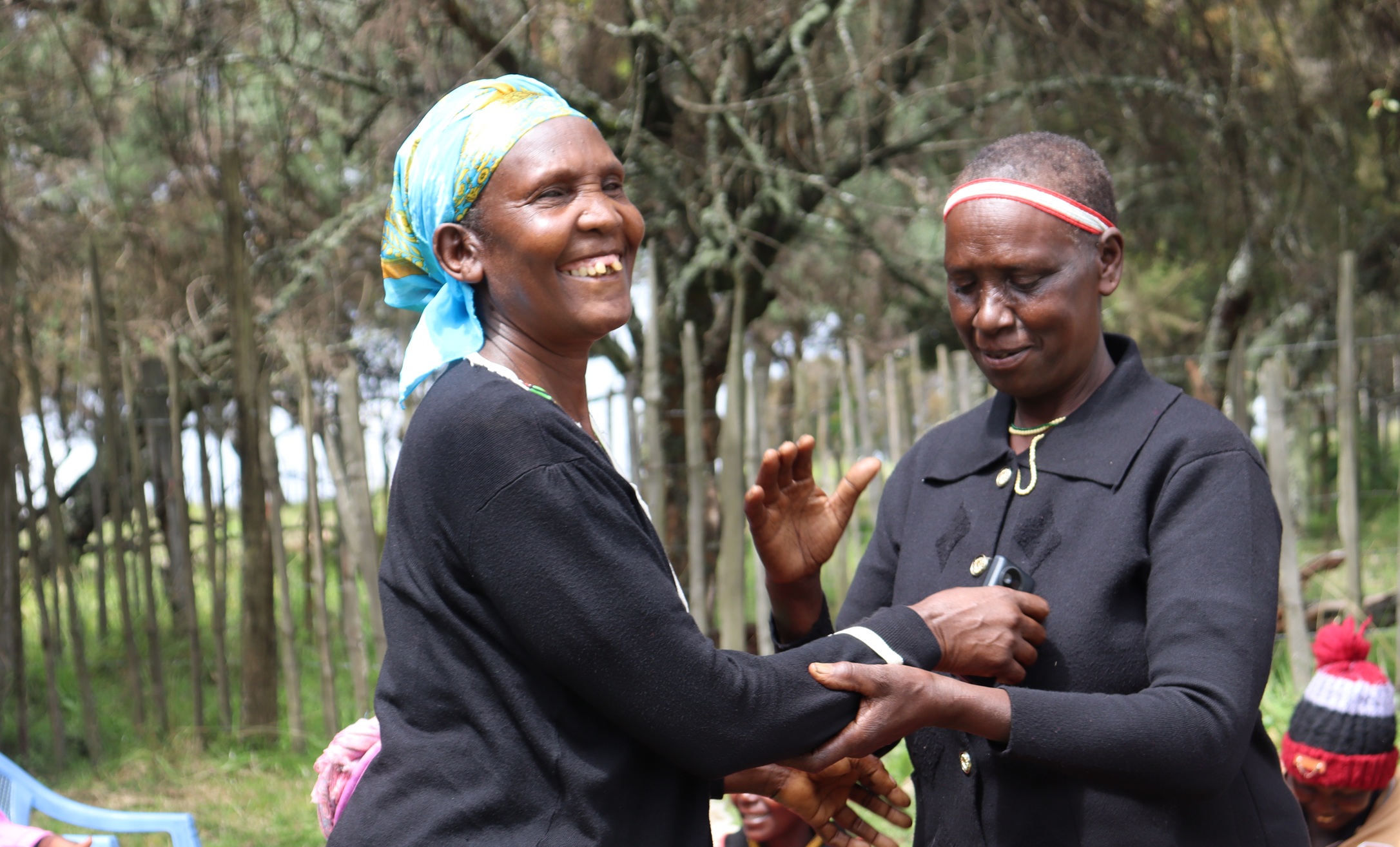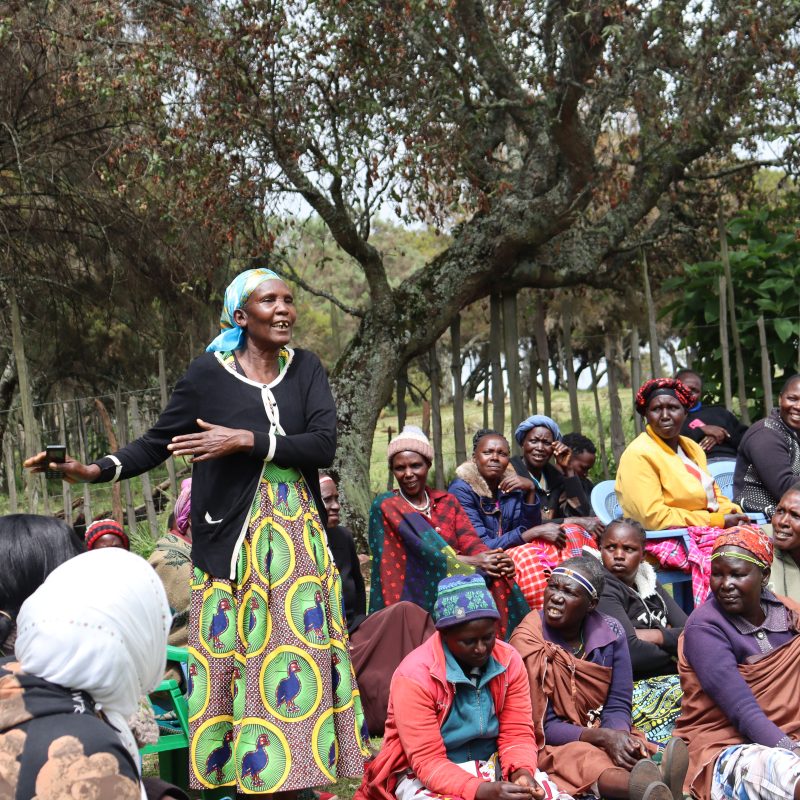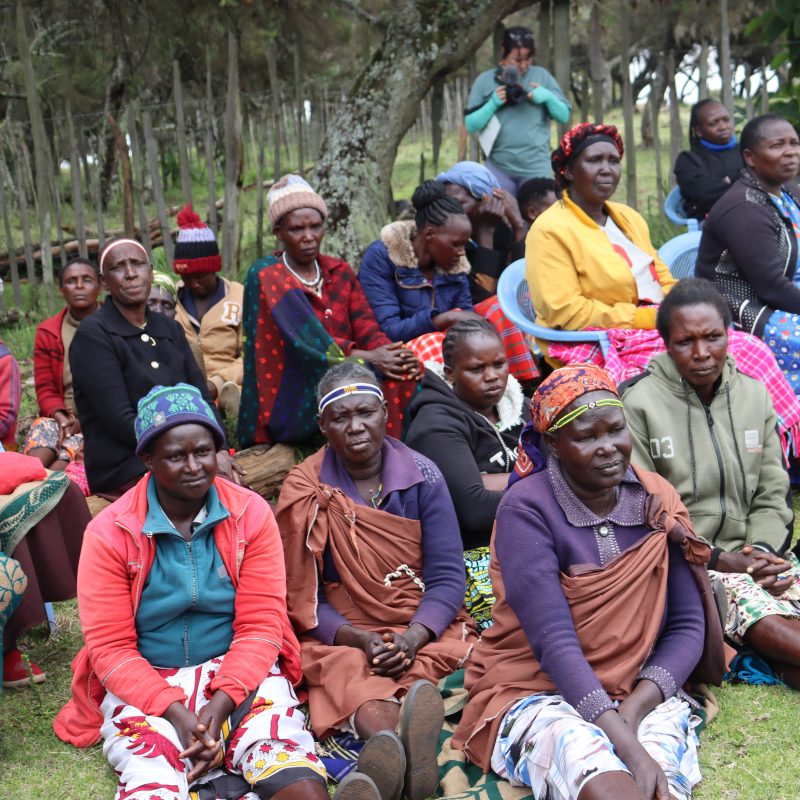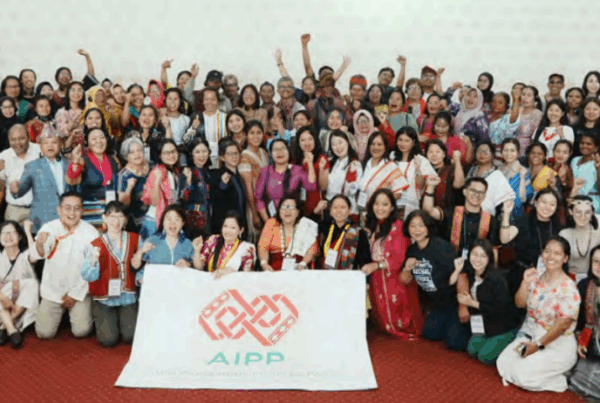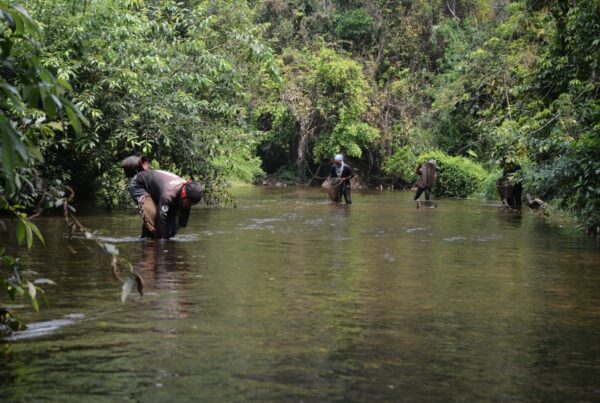Article and photos by Oliviah Tawarar, IIN
In June 2025, Transformative Pathways held an Africa Regional Extension Workshop in Kenya, co-hosted by the Chepkitale Indigenous People Development Project (CIPDP) and Indigenous Information Network (IIN). The workshop’s objective was to explore opportunities to build on and extend the activities being piloted in Transformative Pathways at a regional level and with additional national partners in the region. It also aimed at sharing lessons learnt and exploring both similarities and differences in site-based community-led monitoring of cultural and biological diversity.
The workshop took place at Laboot, Mt. Elgon from 4th – 5th June and at Naramam, West Pokot from 7th – 8th June. It brought together indigenous representatives from the Ogiek, Pokot, Samburu, Maasai peoples working with CIPDP and IIN, representatives from Sengwer and Aweer peoples in Kenya, as well as representatives from communities and organizations in Liberia, Congo, DRC, Madagascar and Uganda. At Laboot, Ogiek elders opened proceedings by leading participants through a traditional ritual ceremony. The workshop went on to discuss three key thematic areas of Monitoring, Gender and Advocacy.
“I learned a lot here, especially in terms of community governance and community conservation. Because this is something that is not yet in place in Congo,” said Erick Nkodia, Executive Secretary of the Community Development Support Center (CECD), Republic of Congo.
Community conservation rooted in knowledge and technology
As one of the hosts and Transformative Pathways partner, CIPDP shared information about project activities that promote grassroots conservation, anchored in traditional knowledge and biodiversity monitoring, along with their joint advocacy efforts supporting community-led conservation initiatives in the Mt. Elgon region.
“We monitor spaces (in Mt. Elgon) according to their ecological zones and our indigenous knowledge which we transfer to our children, so when they are monitoring, they go along that particular history about their land,” stated Cosmas Murunga, Ogiek elder and Chair of the Council of Elders in Chepkitale
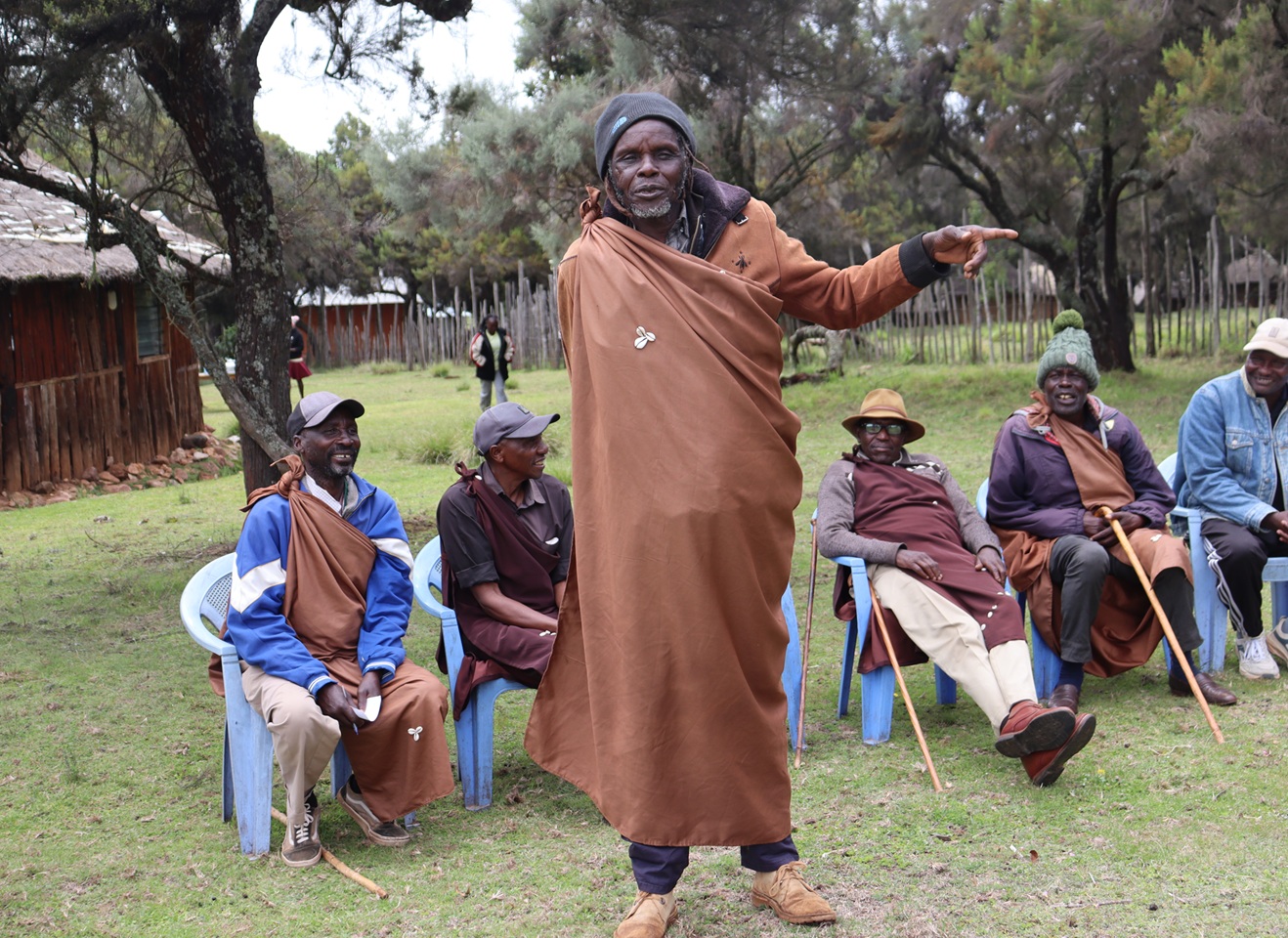
The Ogiek, through their trained biodiversity monitors, demonstrated monitoring methods aligned with indigenous knowledge, that assess the flora and fauna within their territory. The collected data is shared with the Ogiek elders, who consult other community leadership structures to guide their decision-making. Where trends exceed their decision-making limits, they consult relevant government agencies to ensure appropriate action is taken.
The monitors further demonstrated the use of CoMapeo, an upgraded version of the Mapeo digital platform, which enables community members to gather data from the field using mobile phones. The community is currently applying various scientific methods including Line transect, Quadrat, Camera traps and high point survey. The monitoring work is led by two community youth who completed a three-month fellowship on community-led biodiversity monitoring at Oxford University, under the Interdisciplinary Center for Conservation Science (ICCS).
The monitors explained that the updated version – CoMapeo, includes enhanced features such as audio recording, location tracking, stronger data security clearer image display, and easier data synchronization.
Helen Newing from ICCS spoke about their role as one of the global project partners, in supporting communities to set up biodiversity monitoring. This is done through work on the ground to support the design and trialing of biodiversity monitoring protocols by different partners. It is also done through publication of guidance on tools and approaches for community-led biodiversity monitoring, developed by ICCS, which are then made available to communities and those who work with them elsewhere. Newing also reflected on experiences from both Thailand and Kenya, emphasizing how community-led monitoring can foster stronger relationships between local communities and government agencies.
Land restoration grounded in collective efforts
From Mt. Elgon, the workshop moved to Naramam in West Pokot, where IIN showcased examples of their work within the Transformative Pathways project. Since the start of the project, IIN has mobilized at least 16 women’s groups, each with over 25 members, as well as youth groups comprising more than 80 members, all undergoing regular training that enables them to actively restore degraded landscapes.
West Pokot has long grappled with erosion, deforestation and charcoal burning. However, since the introduction of the Transformative Pathways Project, the area has begun to show signs of recovery. Community-led fencing initiatives have proven highly effective in protecting regenerating vegetation. Workshop participants visited fenced areas, where they observed visible improvements, with young trees thriving and grass cover becoming denser and greener. IIN’s long-term goal is to scale up these practices, promoting the widespread adoption of sustainable land management techniques across more communities.
In Naramam, participants were also provided with space to reflect on the broader achievements of the Transformative Pathways acknowledging the importance of knowledge-sharing and community participation, the strengthening of land and resource rights and the improvement of local livelihoods.
“Conservation here is not only about restoring ecosystems but also about reinforcing cultural identity and continuity,” said Lucy Mulenkei, Executive Director of Indigenous Information Network.
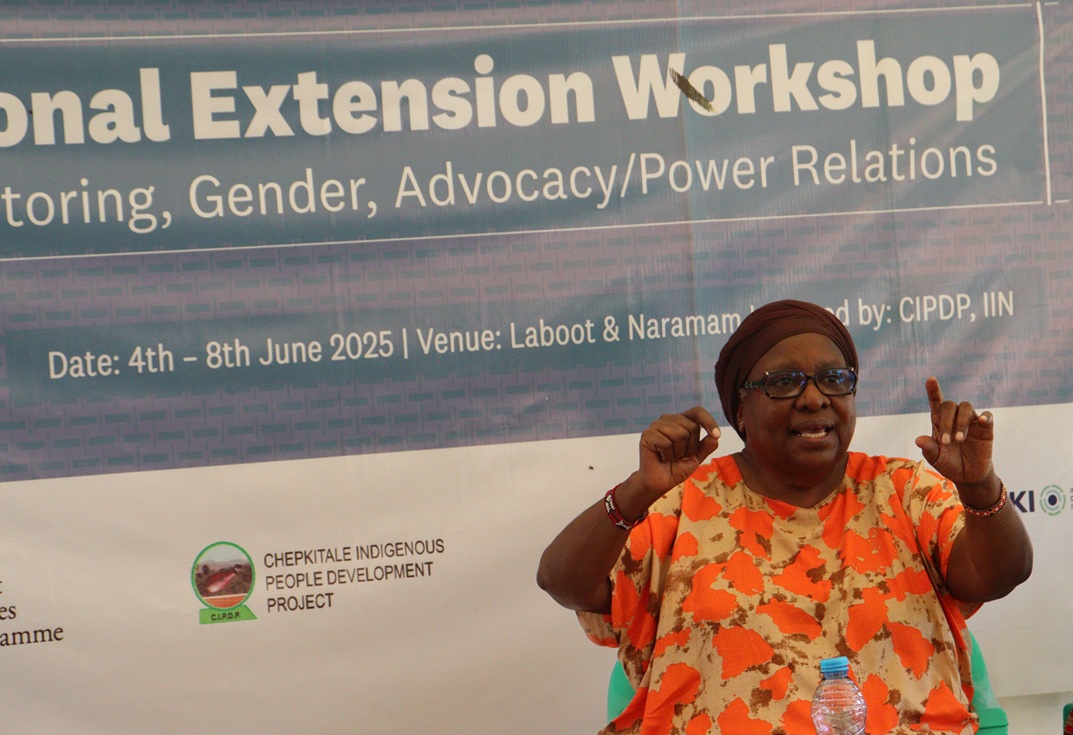
The eight-day engagement across Laboot and Naramam was more than just a workshop, it was a journey of shared learning, cultural exchange and collective action. It highlighted the critical role of Indigenous Peoples and local communities in biodiversity conservation. The lessons learnt and networks built during this gathering will continue to guide and inspire efforts toward conservation and sustainable development across Africa and beyond.
